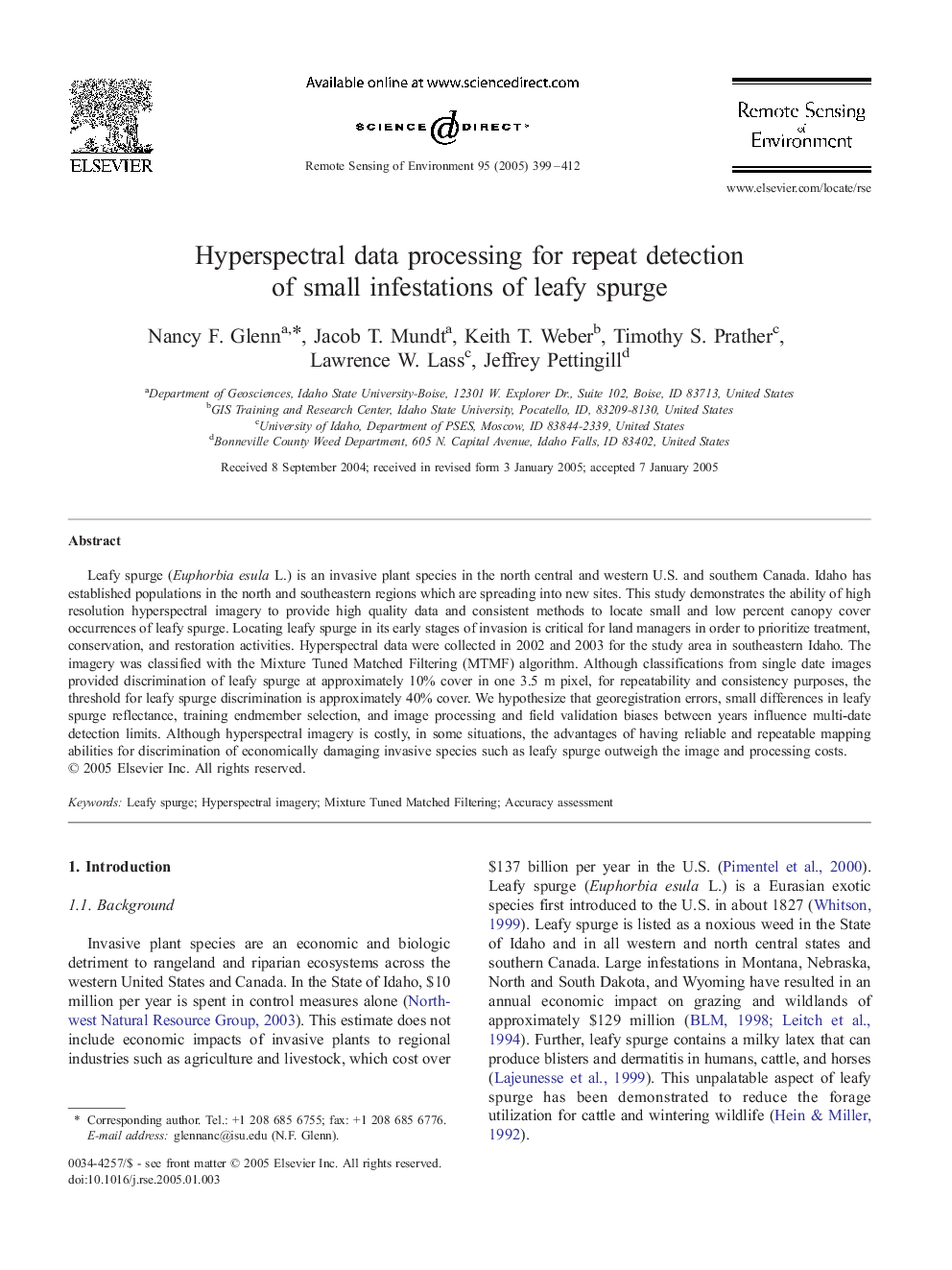| Article ID | Journal | Published Year | Pages | File Type |
|---|---|---|---|---|
| 10114277 | Remote Sensing of Environment | 2005 | 14 Pages |
Abstract
Leafy spurge (Euphorbia esula L.) is an invasive plant species in the north central and western U.S. and southern Canada. Idaho has established populations in the north and southeastern regions which are spreading into new sites. This study demonstrates the ability of high resolution hyperspectral imagery to provide high quality data and consistent methods to locate small and low percent canopy cover occurrences of leafy spurge. Locating leafy spurge in its early stages of invasion is critical for land managers in order to prioritize treatment, conservation, and restoration activities. Hyperspectral data were collected in 2002 and 2003 for the study area in southeastern Idaho. The imagery was classified with the Mixture Tuned Matched Filtering (MTMF) algorithm. Although classifications from single date images provided discrimination of leafy spurge at approximately 10% cover in one 3.5 m pixel, for repeatability and consistency purposes, the threshold for leafy spurge discrimination is approximately 40% cover. We hypothesize that georegistration errors, small differences in leafy spurge reflectance, training endmember selection, and image processing and field validation biases between years influence multi-date detection limits. Although hyperspectral imagery is costly, in some situations, the advantages of having reliable and repeatable mapping abilities for discrimination of economically damaging invasive species such as leafy spurge outweigh the image and processing costs.
Related Topics
Physical Sciences and Engineering
Earth and Planetary Sciences
Computers in Earth Sciences
Authors
Nancy F. Glenn, Jacob T. Mundt, Keith T. Weber, Timothy S. Prather, Lawrence W. Lass, Jeffrey Pettingill,
